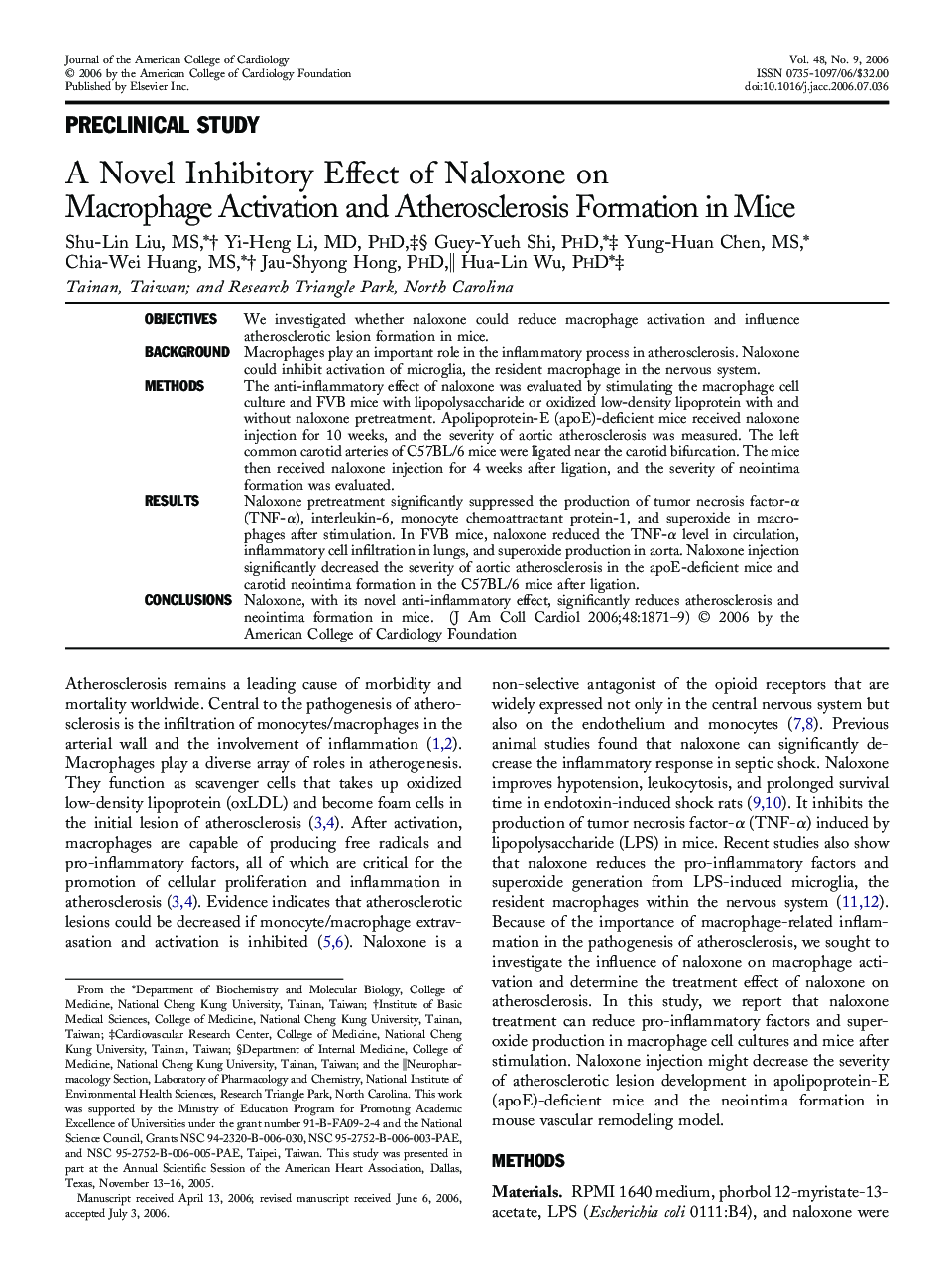| Article ID | Journal | Published Year | Pages | File Type |
|---|---|---|---|---|
| 2955342 | Journal of the American College of Cardiology | 2006 | 9 Pages |
ObjectivesWe investigated whether naloxone could reduce macrophage activation and influence atherosclerotic lesion formation in mice.BackgroundMacrophages play an important role in the inflammatory process in atherosclerosis. Naloxone could inhibit activation of microglia, the resident macrophage in the nervous system.MethodsThe anti-inflammatory effect of naloxone was evaluated by stimulating the macrophage cell culture and FVB mice with lipopolysaccharide or oxidized low-density lipoprotein with and without naloxone pretreatment. Apolipoprotein-E (apoE)-deficient mice received naloxone injection for 10 weeks, and the severity of aortic atherosclerosis was measured. The left common carotid arteries of C57BL/6 mice were ligated near the carotid bifurcation. The mice then received naloxone injection for 4 weeks after ligation, and the severity of neointima formation was evaluated.ResultsNaloxone pretreatment significantly suppressed the production of tumor necrosis factor-α (TNF-α), interleukin-6, monocyte chemoattractant protein-1, and superoxide in macrophages after stimulation. In FVB mice, naloxone reduced the TNF-α level in circulation, inflammatory cell infiltration in lungs, and superoxide production in aorta. Naloxone injection significantly decreased the severity of aortic atherosclerosis in the apoE-deficient mice and carotid neointima formation in the C57BL/6 mice after ligation.ConclusionsNaloxone, with its novel anti-inflammatory effect, significantly reduces atherosclerosis and neointima formation in mice.
